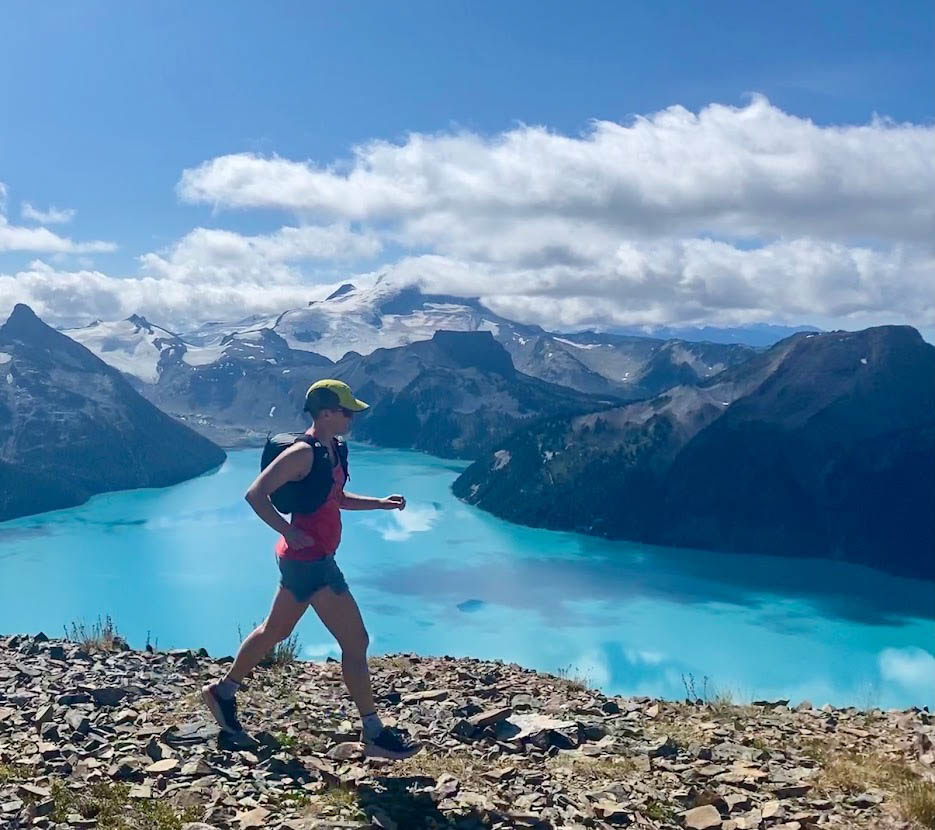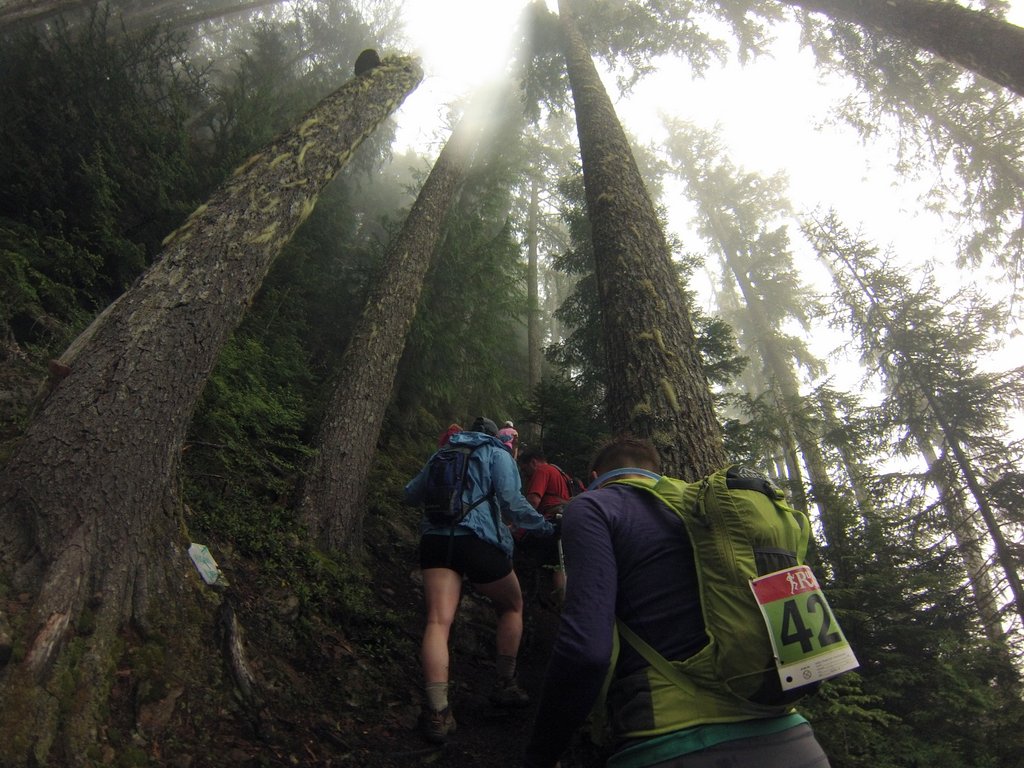In January 2020, I decided my New Years Resolution was that I would run 50km. I was not a runner at all. I couldn’t even run for more than a few minutes without stopping.
First stop, a half marathon
As soon as I started running regularly, I got sick. I was extremely tired. Then I started getting so dizzy I couldn’t walk more than a few feet. Eventually I figured out I had low iron. It took a few months to recover. Just in time for the pandemic to begin.
With gyms closed and no travel, the only type of exercise left was running. This is when I became friends with running. It helped me manage my stress as well as being an excuse to get outside.
I eventually ran my first 5km in a long time. Then 10km. I started running on trails and started a training plan. It took me months, but I finally worked up to my first half marathon.
We ran along part of the Juan de Fuca on the west coast of Vancouver Island. It was a very chill speed, with lots of breaks for snacks and whale watching. My knees were aching. I was so sore. I barely finished. But it felt amazing to take a few hours to go as far as most people hike in one or two days.
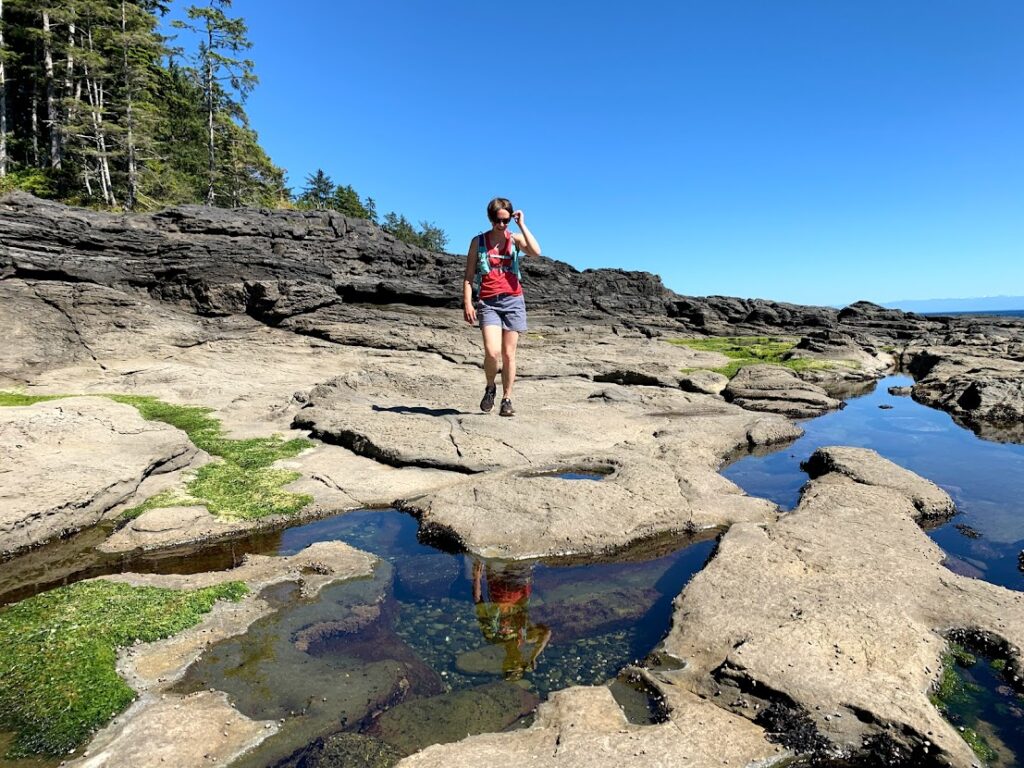
My struggle with the half marathon made me realized that a couch to 50km was not happening in one year. I am inching close to 40 years old. I have grumpy knees and a bulging disc. I have asthma and low iron.
But did I give up? No I did not. I bought a first time marathon training plan and a heart rate monitor. I kept taking my iron supplements. And I got to running.
Marathon training begins
I started training with the Uphill Athlete’s Beginner Marathon Training Plan. The training plan is for a flat race, which was not my eventual goal. But it seemed like a good starting point.
I needed to repeat the first month of the training plan several times. Running 30 minutes day after day was very hard for me.
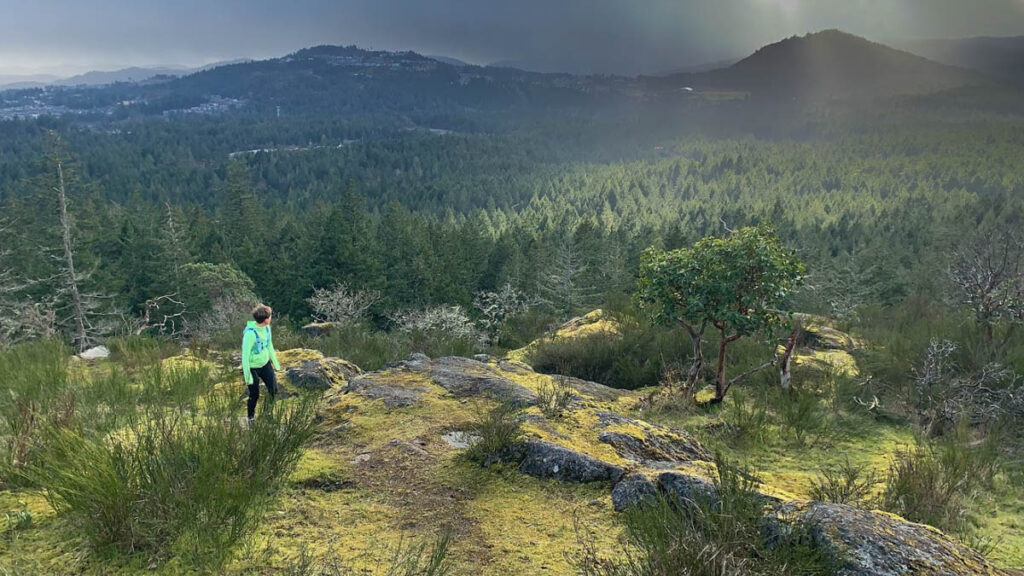
A big part of Uphill Athlete’s approach is that most people need to be running much slower. Running slower actually helps you get faster in the long run! There is a lot of science that goes into this and calculating exactly how slow you should be going. I decided to trust the process. I did the tests. I measured my heart rate. I ran slowly. I ran often.
Erica is a natural athlete. When she went on runs with me, she spent a lot of time waiting for me to catch up. I think she spent about as much time trying not to freeze to death waiting as she did running.
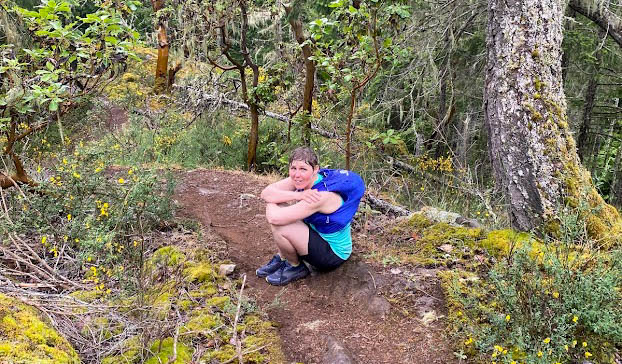
I also found queer running crew through Facebook. I had a lot of lovely conversations with running friends, especially with my friend Kim. We ran once a week in the morning along the ocean. I looked forward to connecting with Kim ever week on our runs. It was very grounding showing up week after week, watching the sky get darker and then lighter again.
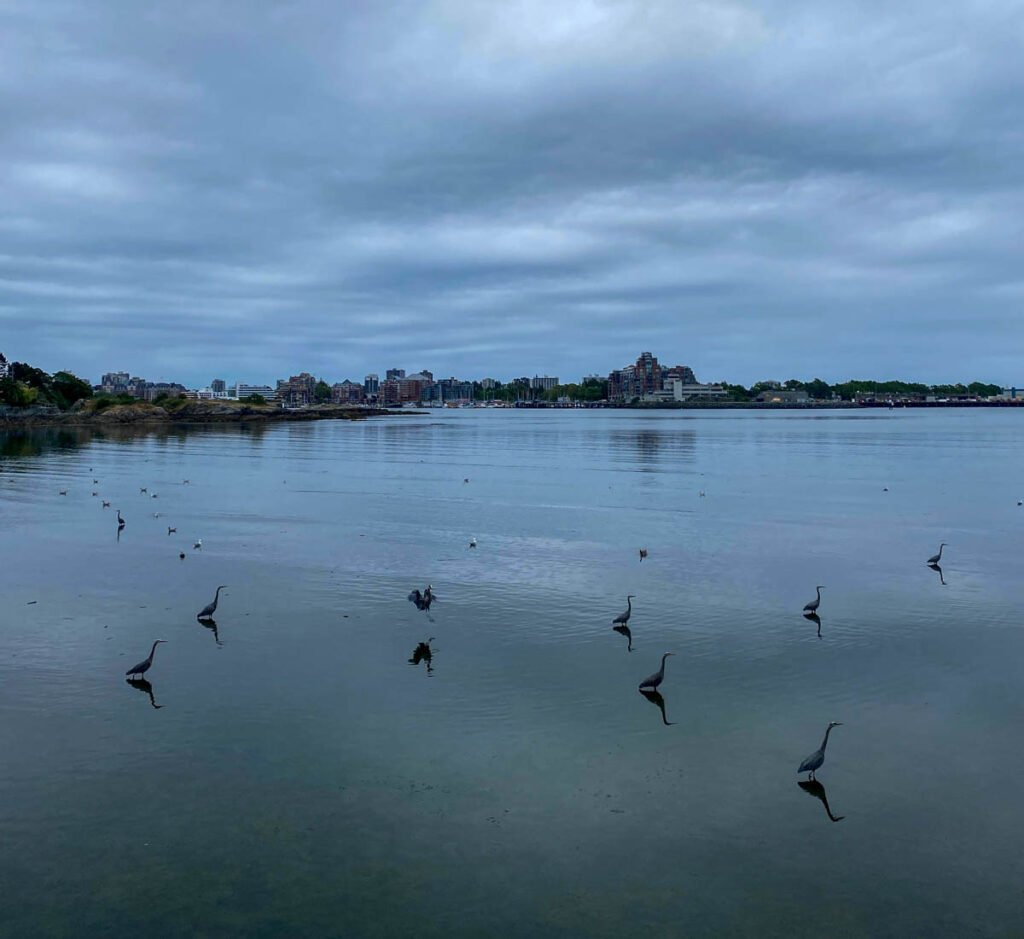
Eventually my weekly 8km run with Kim went from being my long run of the week to a short run. I just kept plodding along. And I started getting faster too. And I started tackling more challenging terrain on my long runs.
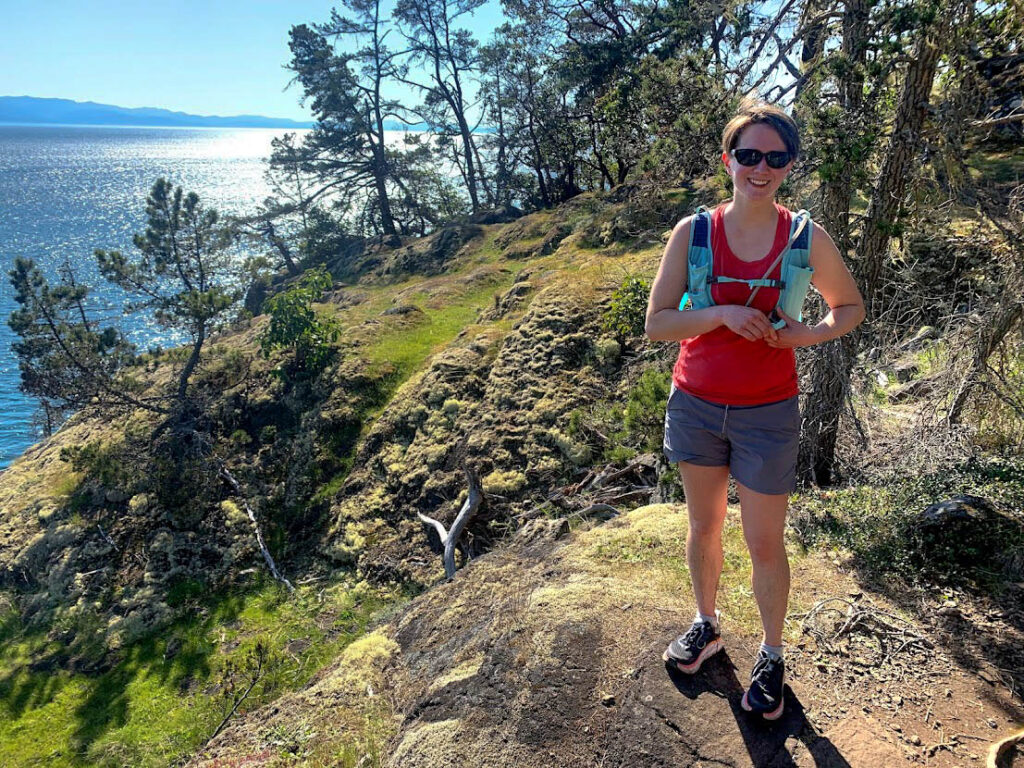
A commitment to running
The spring of 2021 was one of the most stressful times in my life. I decided to quit my job, along with millions of other people in the Great Resignation. I had worked at the same place and lived in the same town my entire adult life.
Where I was living, it was hard for me to go anywhere without seeing people I knew well. It made me feel like I was part of a community, which was beautiful. But I was ready for new challenges and a bigger city.
Running helped me cope with stress during pandemic. So I decided more running might be the ticket to dealing with more stress. Was it time to commit to training for the 50km?
I saw that in person runs were opening for registration for the first time since the pandemic. Would a race help me commit? Did I actually have any business signing up for an ultra race?
I decided to try to run another half marathon as a test. If I could run 20km, I would sign up. I did a solo run up Jocelyn Hill towards Mt Work and back, covering some of the terrain where the Finlayson Arm races go.
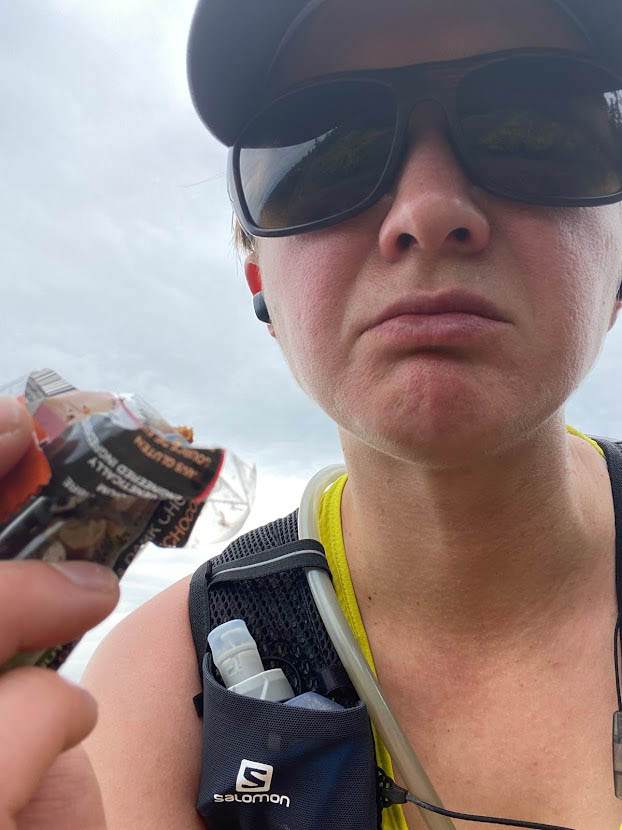
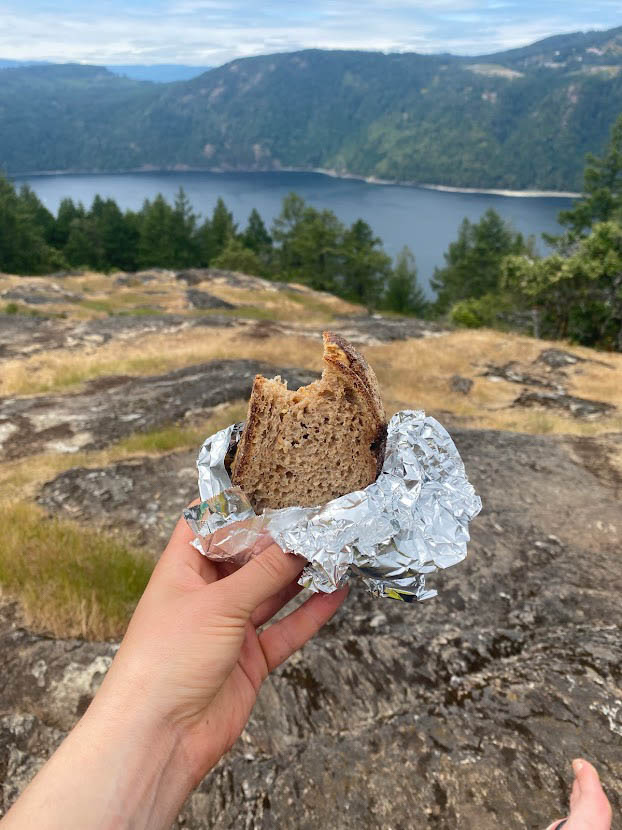
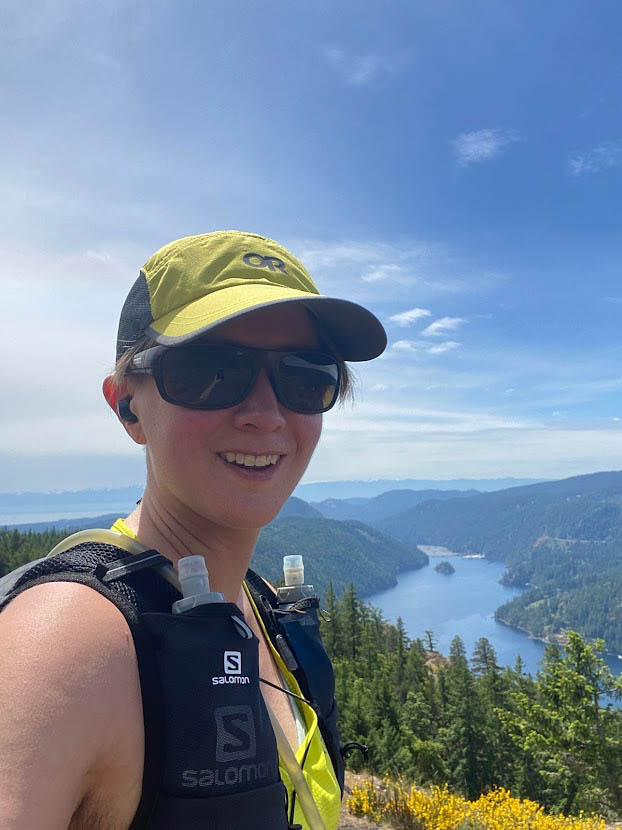
And you know, it was not pretty. I had an injury pop up and get worse throughout the run. I got a little lost. I decided I could never eat a Kind Bar again and that PB&J was amazing. My knees were killing me again. I guess I finished it, but barely.
I wasn’t sure how to interpret my results. Should I sign up for a ultra or not? It was going to take so much TIME to train for and I might not even be ready.
As I was procrastinating by scrolling on Instagram, I saw a post from one of the athletes I follow. She was talking about commitment to a goal. Commitment means saying no to a lot of other things. But it also means saying a big YES to one thing. For me, this would mean a lot less climbing and hiking. And a lot more running. I had never committed to anything like that before. Might as well try.
So I signed up for my first ultra, the Diez Vista 50km in Port Moody in October 2021.
All I do now is run
My training ramped up right as we moved to Vancouver. I switched to Uphill Athlete’s Intro to Ultra Running Training Plan. This plan would help me cover the entire distance and tackle the hills on a mountain trail run. Things got intense quickly, but I found that I could handle the training load.
I began falling in love with our local trails. The closest area to my new home was Lynn Headwaters. I missed the ocean. But I started loving the forest and rivers.
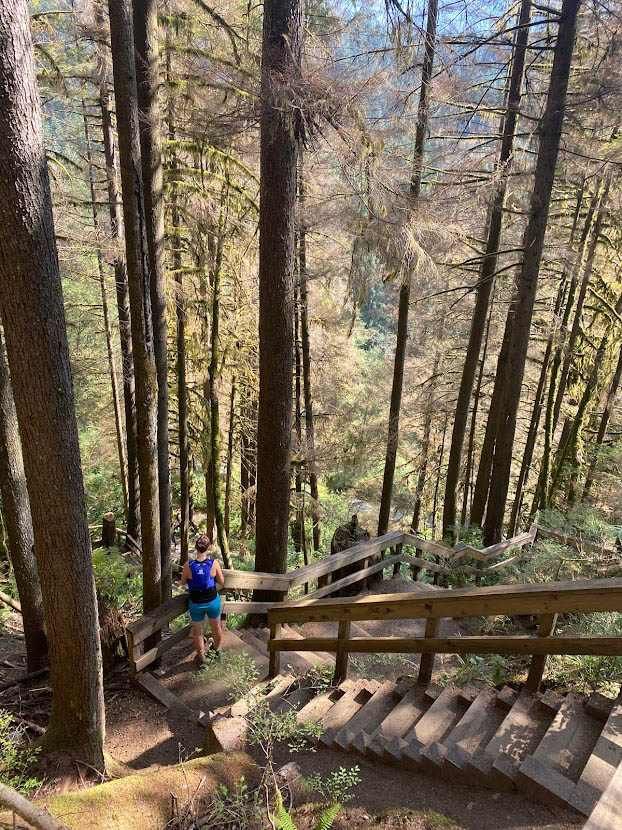
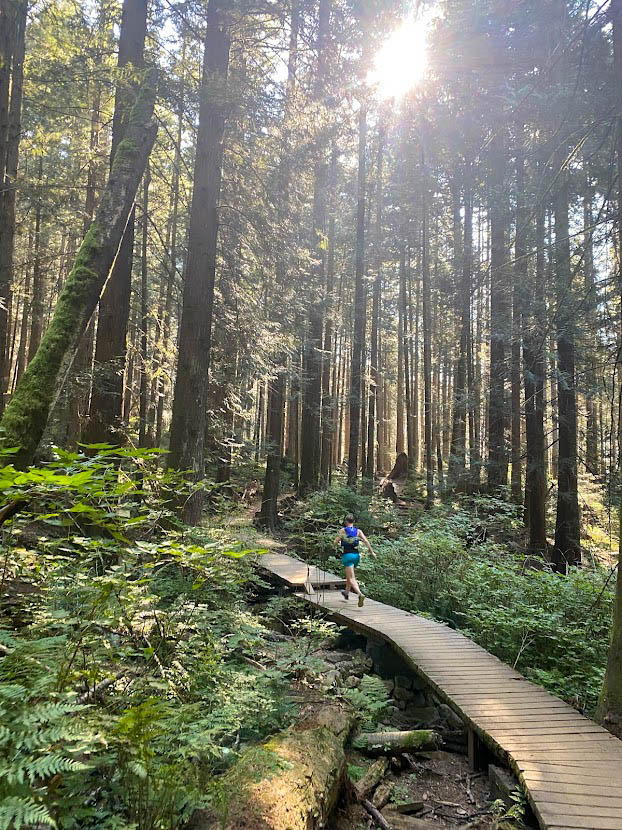
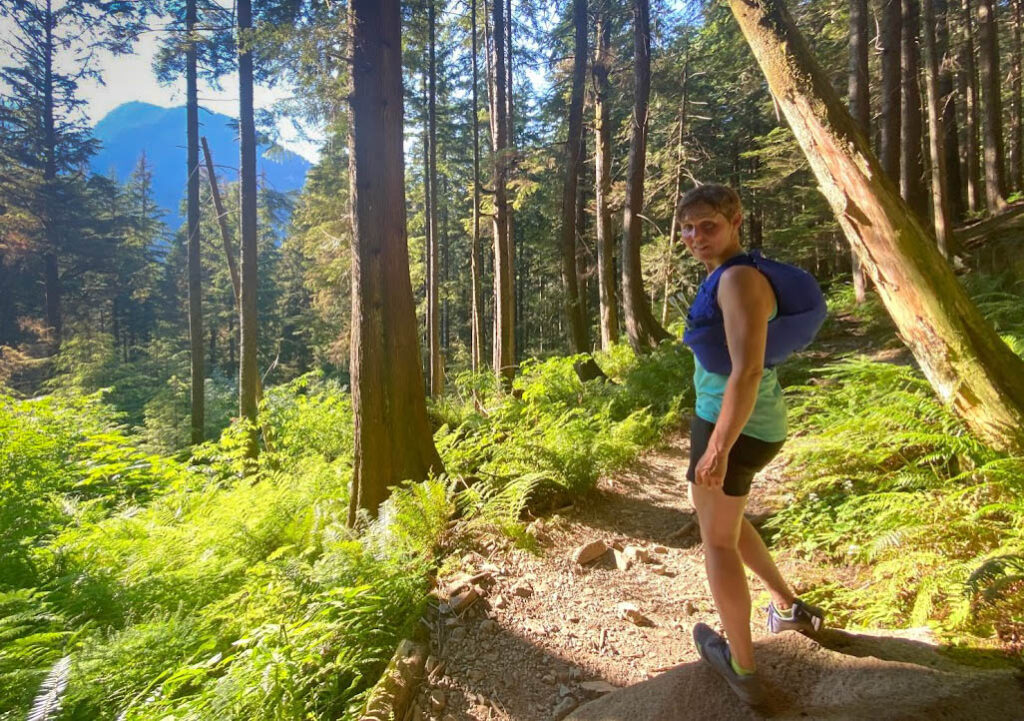
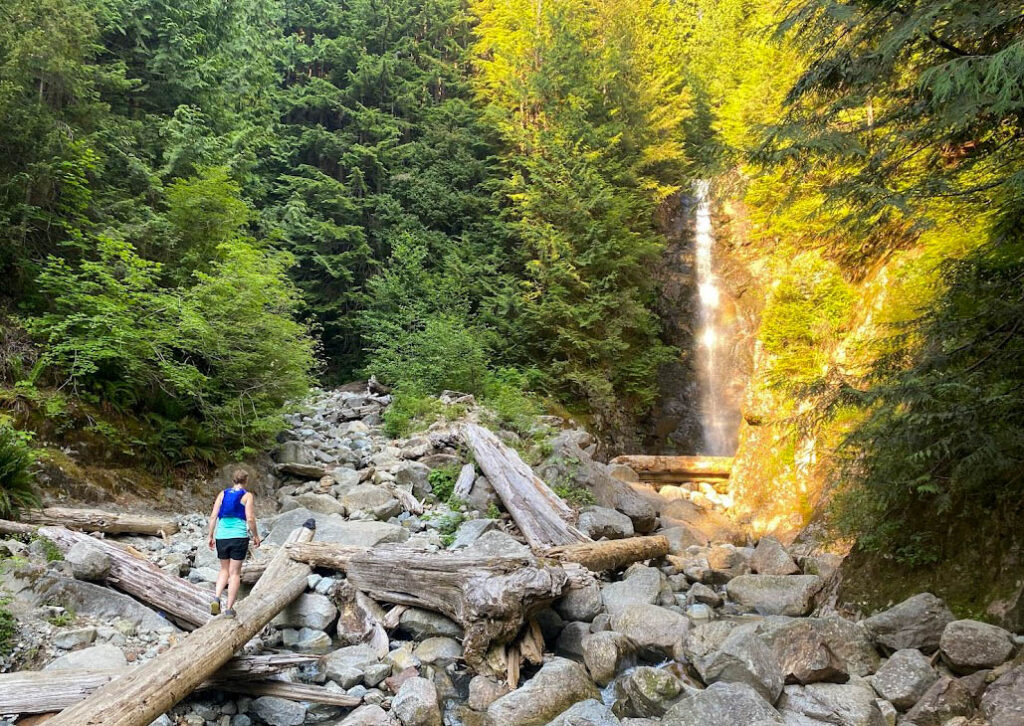
I used to spend my weekends in the summer mountaineering and climbing. But this summer, it was all about running.
My favourite run of the year was going up Panorama Ridge and Garibaldi Lake. It was my first time running over 30km. This is when I truly felt like I was on my way to meeting my goal of running 50km.
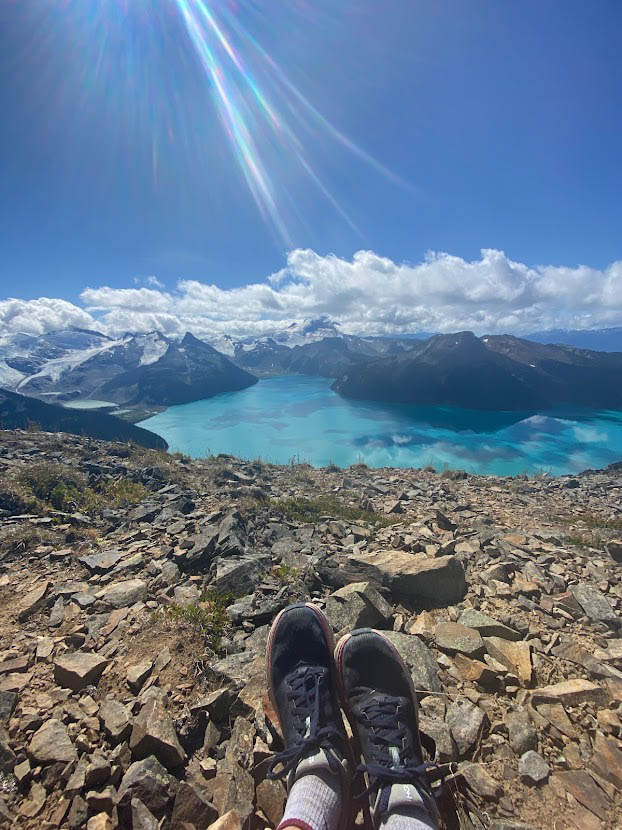
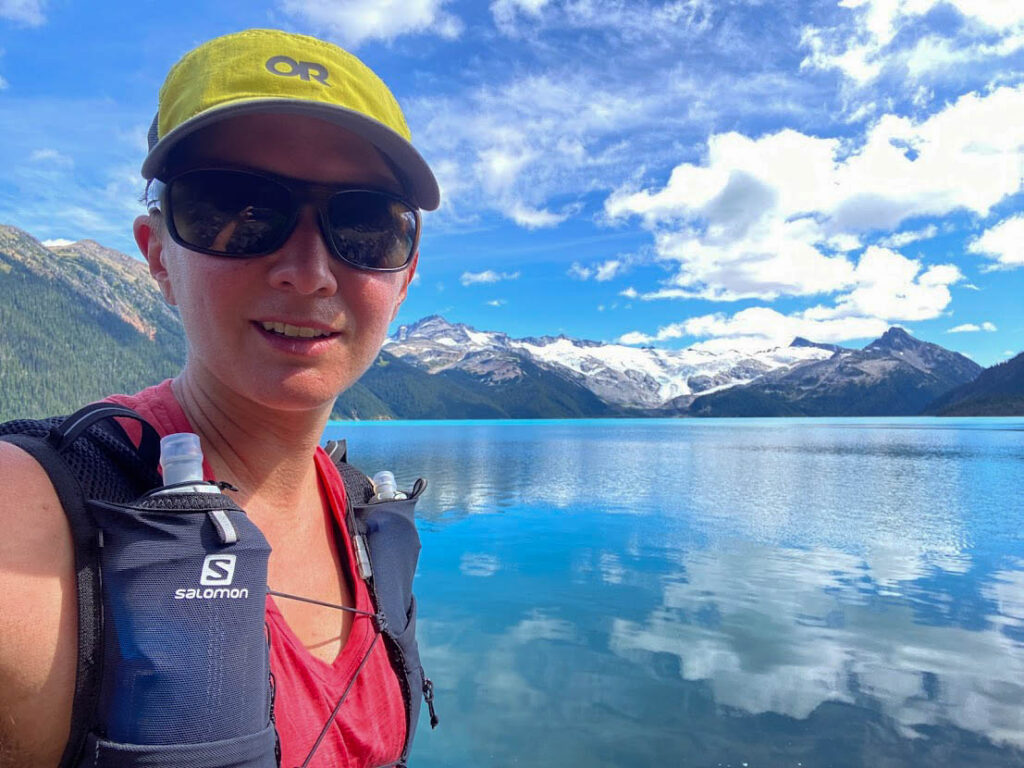
Another run I loved was running through the Hayes Valley. Most people hike from Lynn Headwaters to Grouse Mountain and then drive back to their car. But we kept going and ran all the way back! (We maybe got a little lost on the way back.)
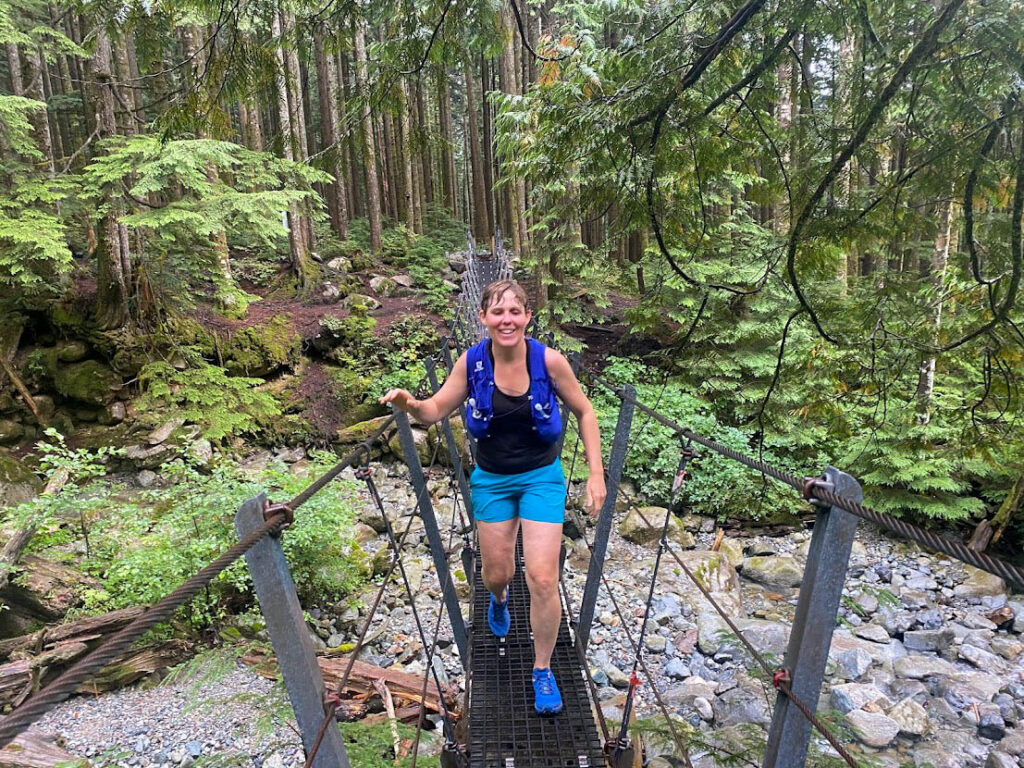
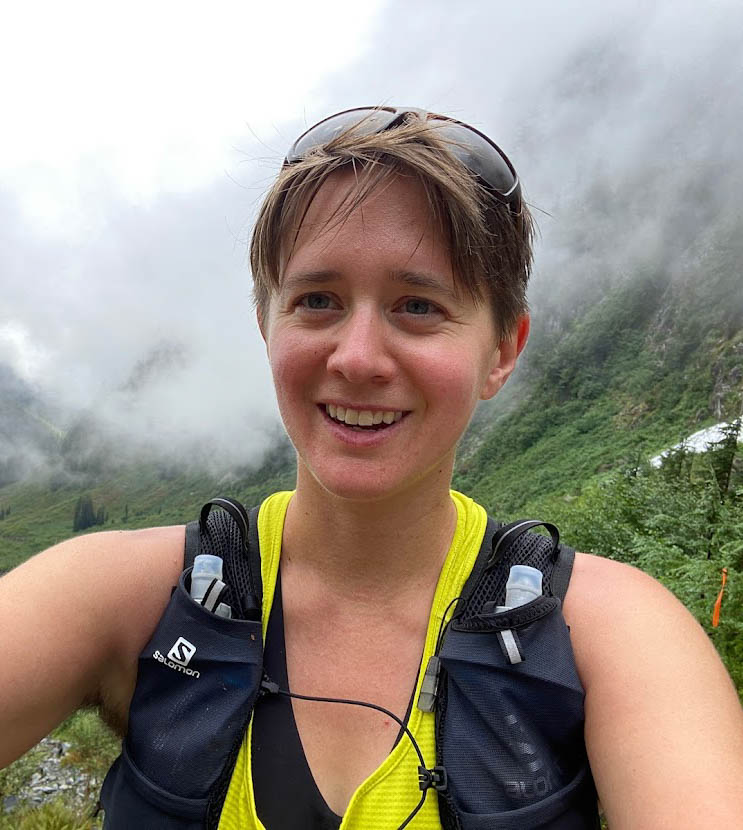
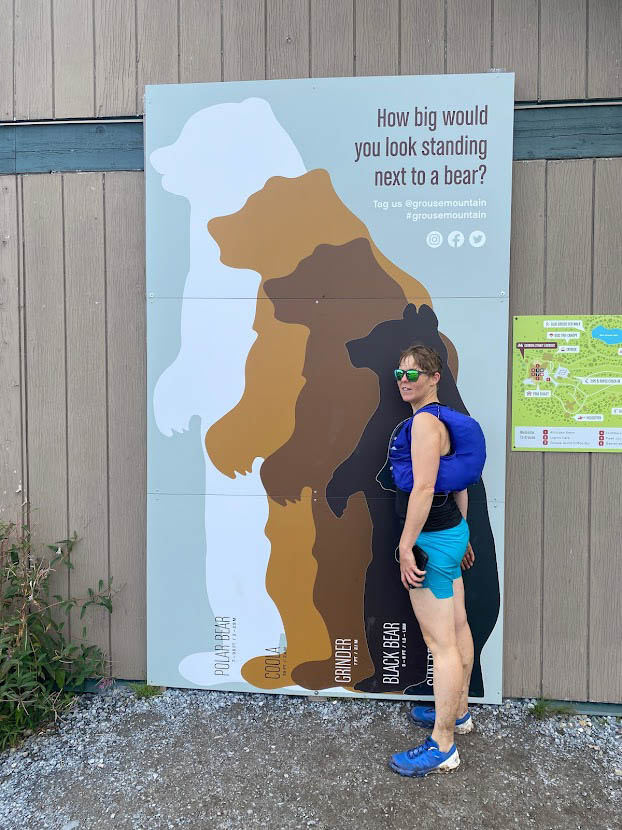
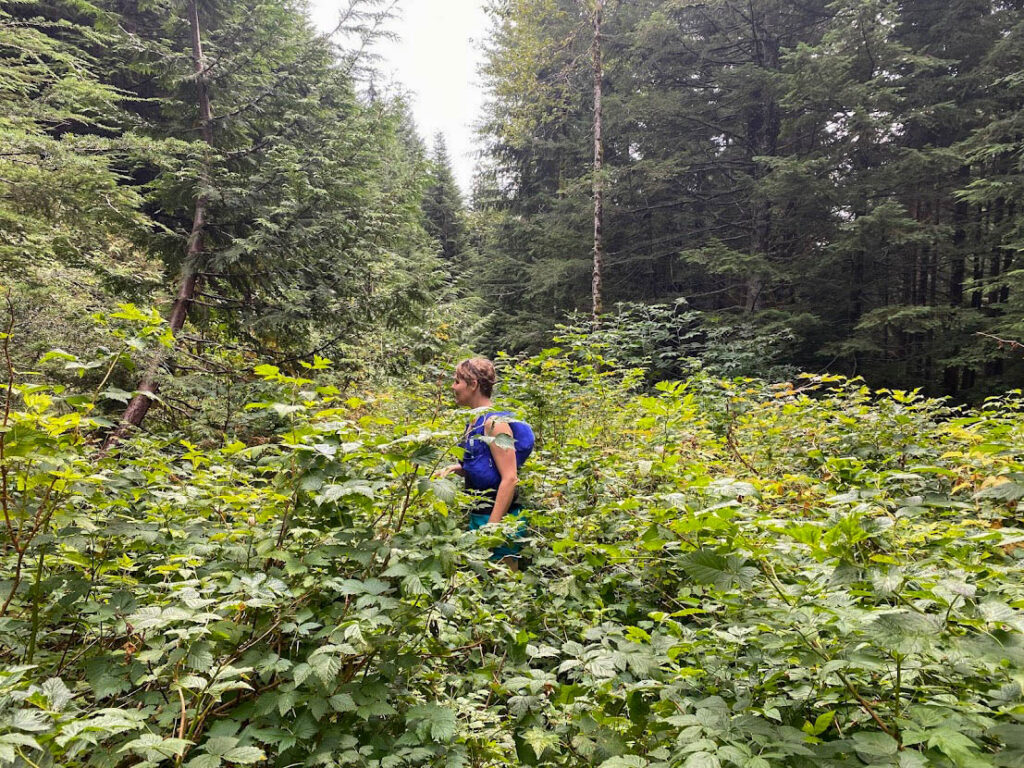
It was so fun to run all day, farther than I ever travelled in a single day before. And I felt amazing! No pain. My muscles weren’t even sore. I had no doubt in my mind that my race day would be successful. I even started thinking about setting a time goal.
My first trail race: Whistler Alpine Meadows 25km
At this point, I started getting anxious about race logistics. How do you pick up your race kit? What is a drop bag? How fast do other people run?
I had a minor injury to my Achilles heel, but I was working with a physiotherapist. Things were going well.
I decide to sign up for the 25km of the Whistler Alpine Meadows. This was a very comfortable distance for me. I can just go check out a race without the running being stressful.
I start out in the back-middle of the pack. I cry a little bit at the start cause this day I worked so hard for is here! I am racing!
This course is quite different from what I am used to, as you can actually run the entire thing. A lot of the trails I had been running required walking because of the uneven ground or the steep hills.
I feel the race energy sweeping me along, but I force myself to run slower. I don’t want my injury to get any worse. And my actual big race is six weeks away!
I finish the race pain free but near the end of the pack. But I had fun and I figured out how races work! Mission accomplished.
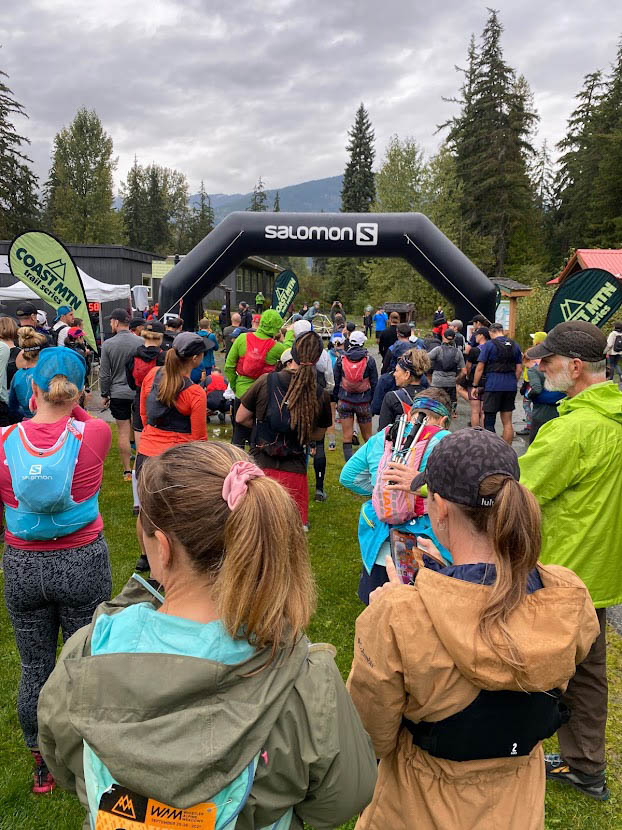
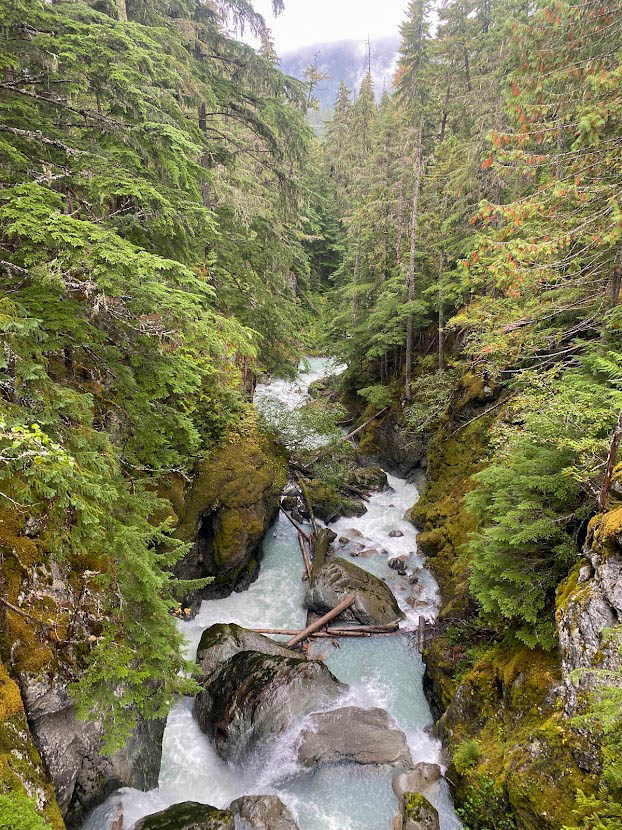
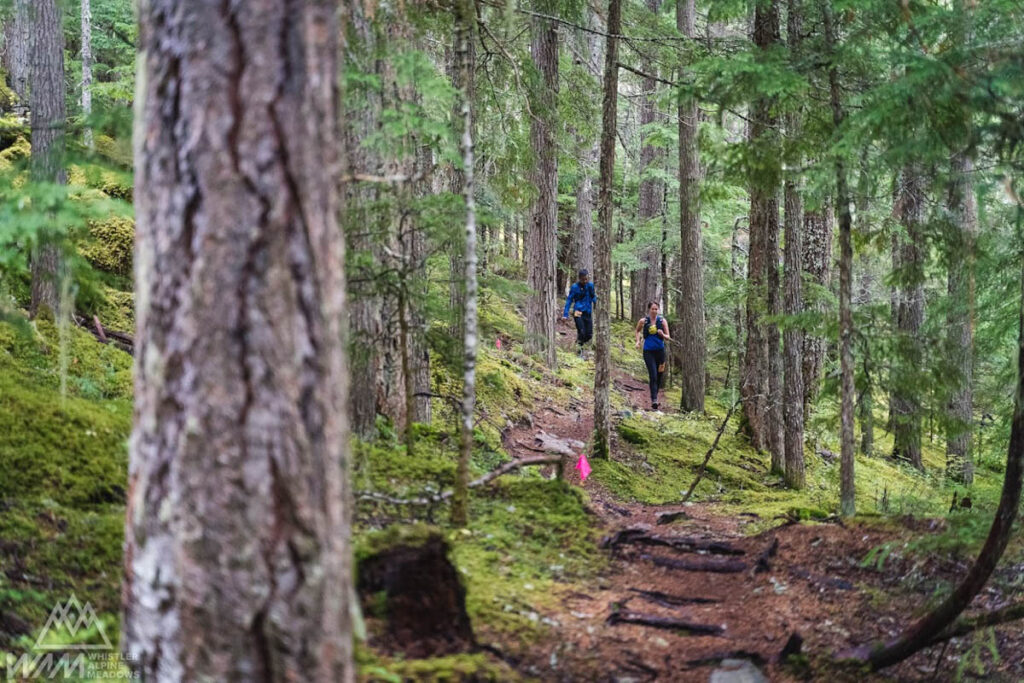
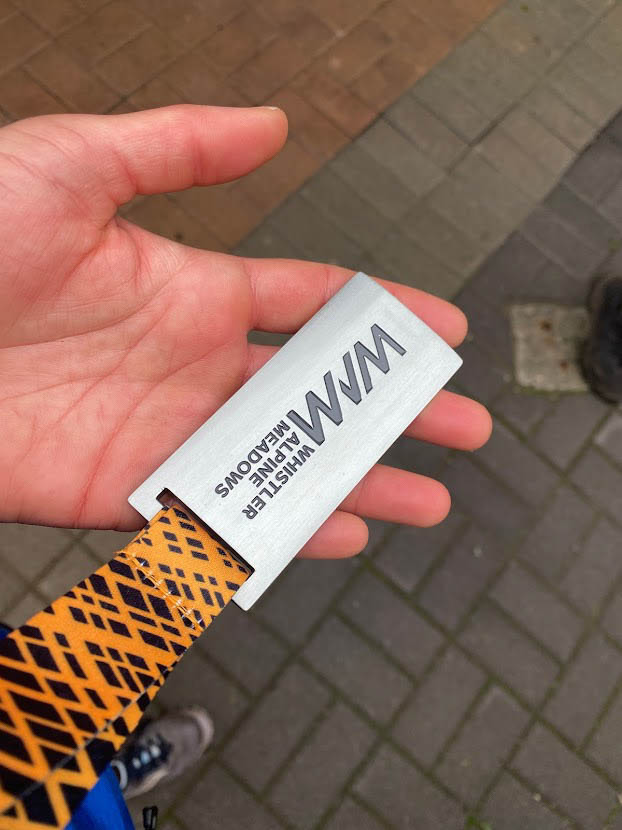
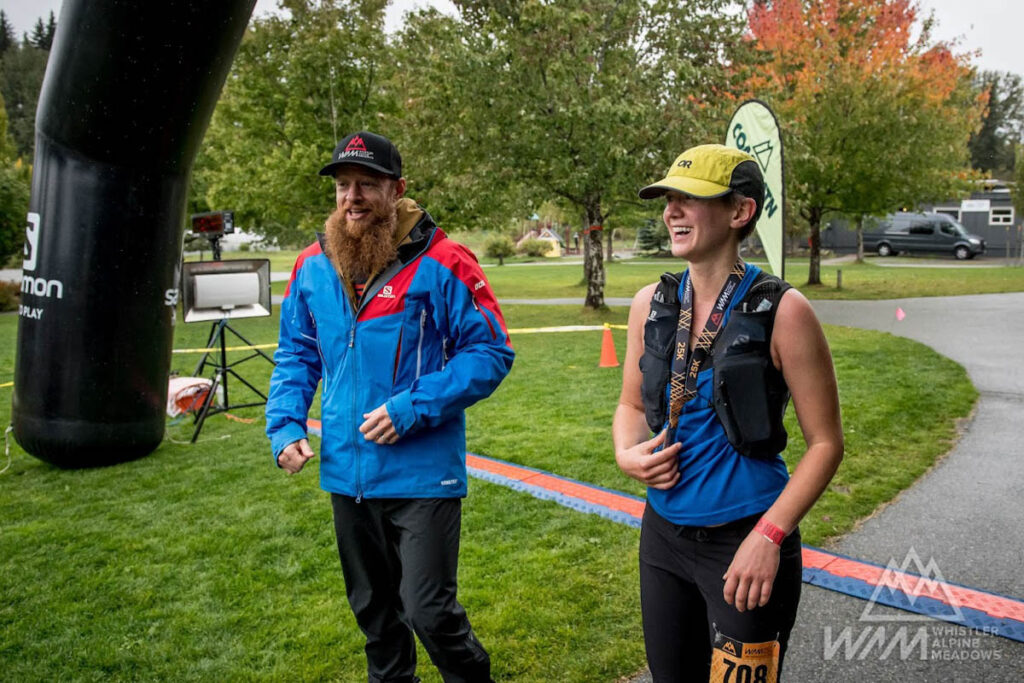
Things go off the rails
My training plan warned that things can wrong as the intensity builds at the end. The plan told me to rest and eat well. I decided to follow this advice to the letter. And I also decided to rest whenever I felt like I needed it. I would not be pushing it too hard and ruining what I had built.
My next training run after Whistler Alpine Meadows goes very badly. My knee starts hurting intensely. I have to walk back to the car, finishing in the dark.
I go back to the physio. She tells me my knee pain is probably caused my running too much. She recommends that I stop running if I have any hope of trying my 50km race. At first, I try doing a mix of walking and little bits of running cause I cannot give it up. But that feels bad. So I switch to hiking and climbing.
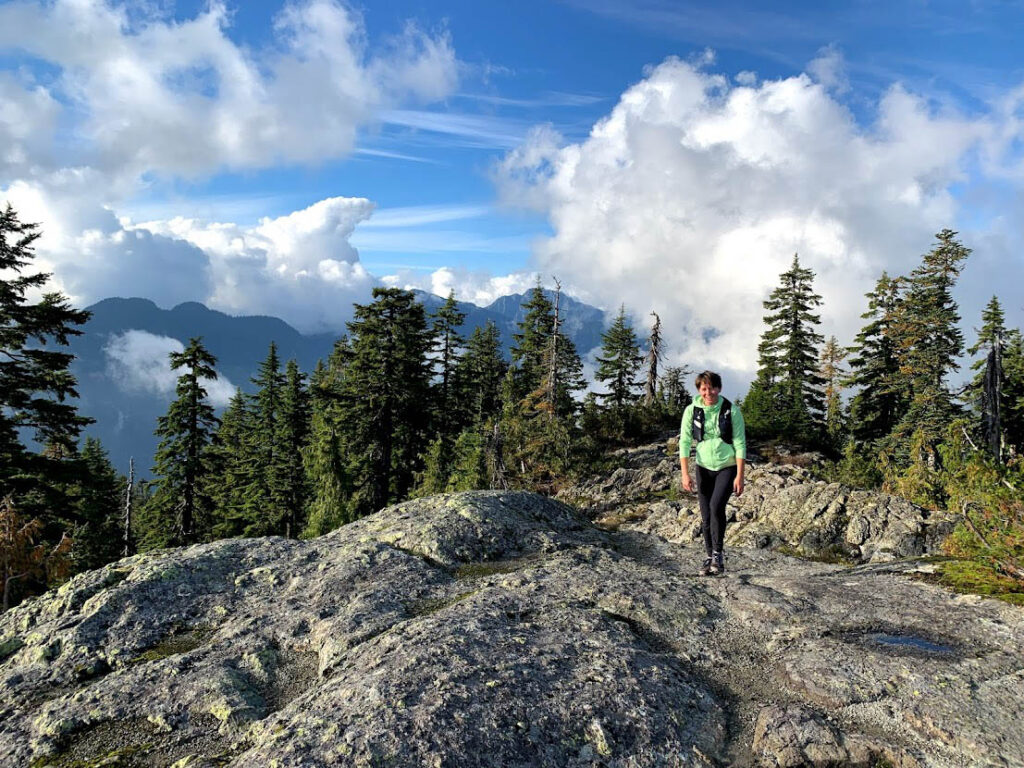
It’s about four weeks until my race at this point. And then a third injury pops up. I had pulled my groin earlier in the year from doing too much elevation too fast. And here it was again. My entire leg is in pain from top to bottom.
I switch to going on little walks around the neighborhood, doing my physio exercises and eating carbs. And trying to not feel too sorry for myself.
Race Day: Diez Vista 50km
I show up on my race day having not really run in almost six weeks. I don’t have any pain anymore, but I also haven’t been running.
I decide I am going to try as hard as I possibly can. No regrets.
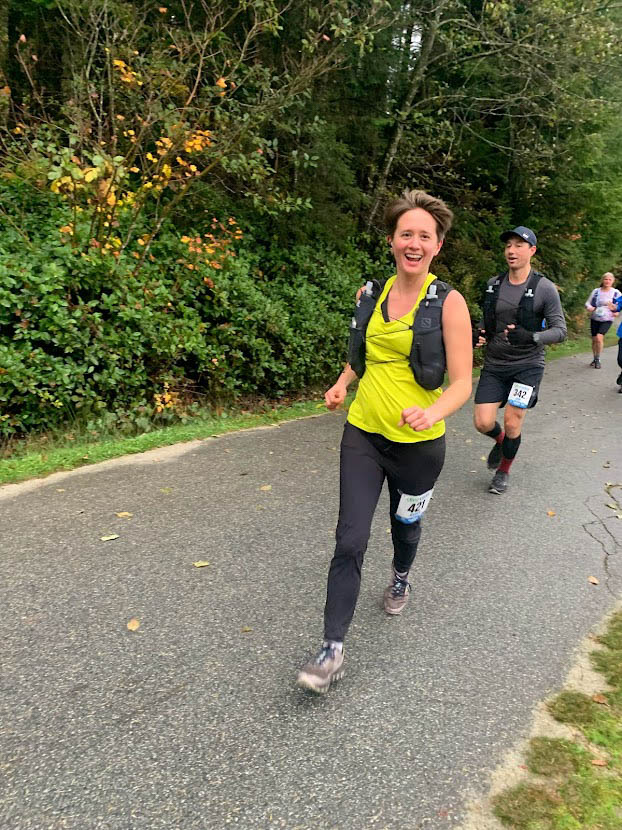
I am excited at first. I am running in the race I worked so hard for! But as we leave the pavement and get onto the trails, things do not feel right in my body. My injuries are just right there where I left them. Not quite as bad as they were. But I am not totally as strong as I was earlier in the summer either.
I am towards the back of the pack, but not the absolute end. I am a very strong hill climber, so I actually pass a number of people as we make our way up the biggest hill of the course.
But then it’s downhill. So much downhill. And I cannot make my legs go any faster, mostly due to my injuries. I am passed by a lot of people. I had calculated the pace I needed to go to finish this without being disqualified, and the downhill is killing my chances.
I sort of want to give up at this point. But I decide to just keep going. I don’t really have a good sense if I am right on the edge of making the cut off time or not.
I reach the aid station with drop bag about 25km in. I eat my peanut butter and jelly sandwich. A volunteer hands me miso soup which I like very much. I want to stop running, but I make myself keep going. I need to get to the 37km check point before seven hours are up if I want to avoid being disqualified.
At this point, I notice my knees stop bending when I go downhill. Someone asks me if I am OK and I lie and tell her that I am not limping. This thing with my knees has happened to me before when I push myself. I know I recover quickly after its all over. So I keep going.
Eventually I am unable to will myself to run anymore. I have been tired while running before, and taken breaks or walked. But I had never actually reached the point where my legs could not run. I check my phone and I am several km away from the checkpoint and have less than 10 minutes to get there.
I call Erica and tell her I am not going to make it. I am strangely not upset. It’s pouring rain. I am shivering. She starts walking up the course to find me and brings me warm clothes and an umbrella.
I start limping towards the exit. Search and Rescue volunteers are sweeping the course for stragglers. They do not believe me when I say I am fine, and one of them lends me his hiking poles. I hop towards the car, and the sandwich and cake Erica has for me there.
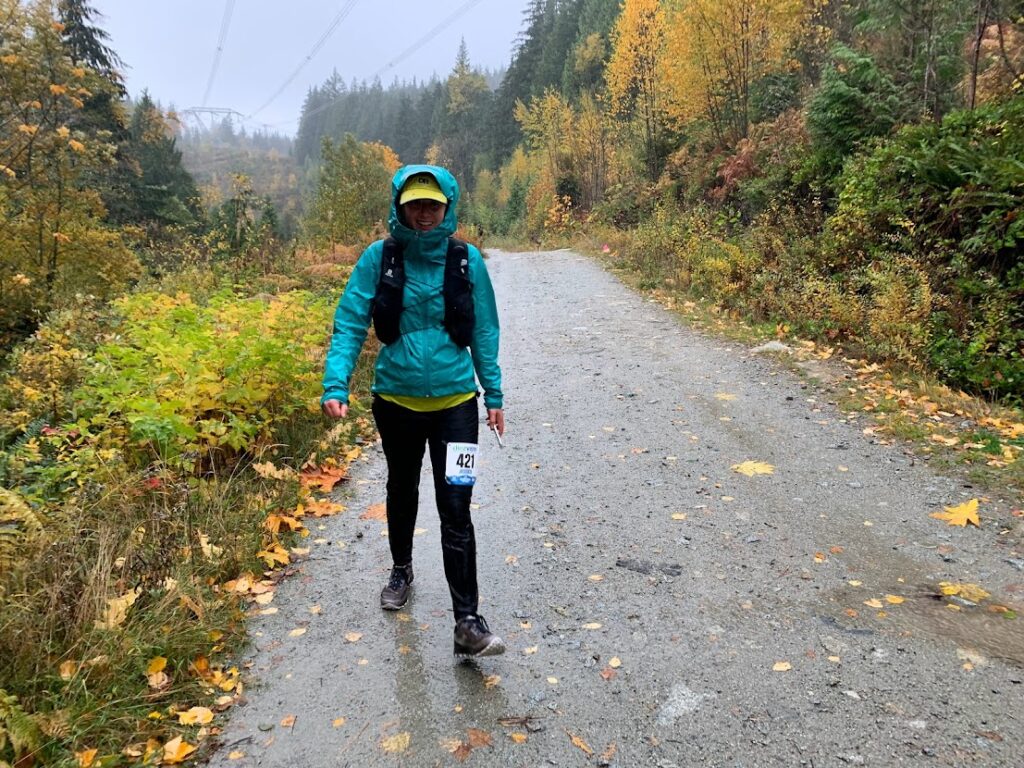
The aftermath
My knees healed up quickly as they always do. They started bending again after two days of rest. My muscles stopped being extremely sore after a week. Went on a hike a week later and felt great. I tried doing some leg exercises on week two but my muscles protested GREATLY so I stopped that. I am back to climbing. I even went on a little ski tour last week! So I still need to take it easy, but seem to be on the mend.
Emotionally, I feel great … strangely enough. I don’t feel like I failed to meet my goal, even though that is exactly what happened. I committed to running and I tried as hard as I could every step of the way. It was just not something I was physically capable of doing this year.
Lessons learned
For the most part, I did a great job of listening to my body. I knew when I was getting too injured, and I rested and got help from a physio. This is why I think I don’t have any lasting injuries. With that said, I don’t think I will push it so close to my physical limit again any time soon. I’ve had do a lost of resting for the past 2.5 months to recover from what I did to myself. And that is just really boring.
I learned that I am incredibly mentally strong and can commit to doing hard things over long periods of time. I committed to running and I followed my training plan to the best of my ability. This meant I didn’t have any regrets or doubts. I knew I tried my best. With that said, I will probably be more relaxed in future years. I love climbing and mountaineering and want to get back to them.
I was using my Strava on my phone to track my runs, which turns out has wildly inaccurate distances. I am going to buy a GPS watch to I can train with accurate information.
I followed a training plan, which is great. But I think I am having a harder time than most people who are training for 50kms. I get injured, I am slow. I want to work with a coach who can help guide me on what is appropriate for my body.
And lastly, I learned that training is so much fun! And running is such good stress relief. I love running long distances and want to keep training in the future.

